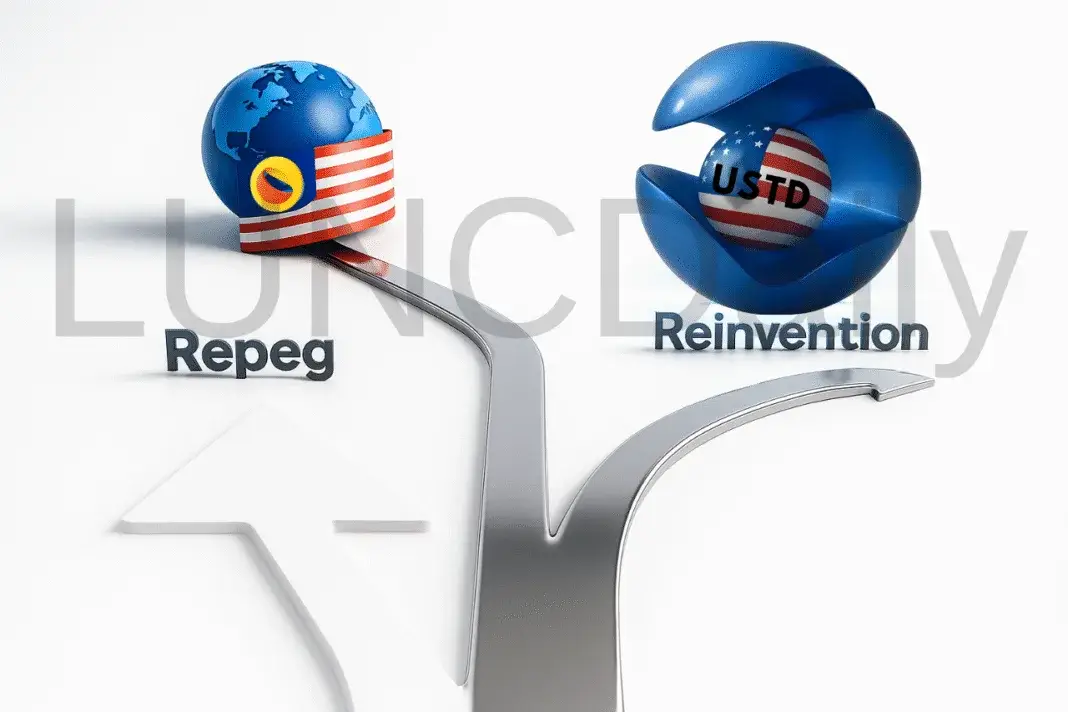Dawid Skinder, a member of the USTD team, offers a professional perspective following the recent article “Balancing Innovation with Accountability in Luna Classic”. While the earlier piece raised important considerations, this commentary aims to respectfully expand on those points by providing additional context around the USTD Protocol and stablecoin, clarifying risks, and highlighting the safeguards in place.
The Nature of Stablecoins and Risk Asymmetry
One criticism of USTD is the asymmetry of its risk profile, where potential downside seems higher than upside. However, this argument applies to every stablecoin, not only USTD. Stablecoins are not designed for speculative profit or 100X returns. Their purpose is yield generation, trading utility, and capital preservation. Therefore, labeling USTD as uniquely risky because of this inherent property is misleading. The focus should instead be on safety and stability, which is what the protocol aims to deliver.
The “Free Body Problem” and Backing with USDT and USDC
Another concern is USTD’s reliance on USDT and USDC as backing assets. It is true that issues with either of these stablecoins could impact USTD. However, the USTD Protocol has built-in mechanisms to mitigate such risks.
● Reserves and Collateral Pool: Half of the generated yield is directed into reserves and a DeFi collateral pool from day one. This collateral strengthens the peg and provides a safety net for redemptions during stress scenarios.
● Market Reality: USDT and USDC are the largest and most widely adopted stablecoins. If either were to collapse, the entire crypto market would face severe disruption, not just USTD.
Systemic Implications for Terra Classic
Some argue that launching USTD on Terra Classic Layer 1 poses systemic risk. While this is true in principle, it is not unique to USTD. Every Layer 1 project carries this responsibility, from modules to protocols. The USTD Protocol was specifically designed with Terra Classic in mind, ensuring it remains decentralized and can generate revenue for the ecosystem. Risks such as mass unstaking, module failure, or market shocks exist in all blockchains, not just Terra Classic. The key is active risk management rather than avoidance.
Cross-Chain Fragility and Bridges
Cross-chain risk is a valid concern, particularly with bridges. The protocol recognizes this in its white paper and implements mitigation strategies:
● Use of Safe IBC for secure interoperability
● Integration with trusted cross-chain swap providers such as Thorchain and Maiar
● Utilization of Circle’s CCTP (Cross-Chain Transfer Protocol) for secure USDC transfers
These solutions rely on industry-leading infrastructure to reduce vulnerabilities and strengthen cross-chain functionality.
The Binance Factor
Some commentary has suggested Binance may view the creation of USTD unfavorably. However, there is no evidence or official statement supporting this claim. Without clear proof, this concern remains speculative and should not be treated as a confirmed risk.
Conclusion
Critical analysis of the USTD Protocol is necessary for the growth of Terra Classic and the wider community. However, context matters. Many highlighted risks are either universal to all stablecoins or already mitigated within the protocol’s design. The USTD Protocol aims to create a decentralized, yield-generating, and resilient stablecoin that can support the Terra Classic ecosystem while addressing the challenges of modern DeFi.

